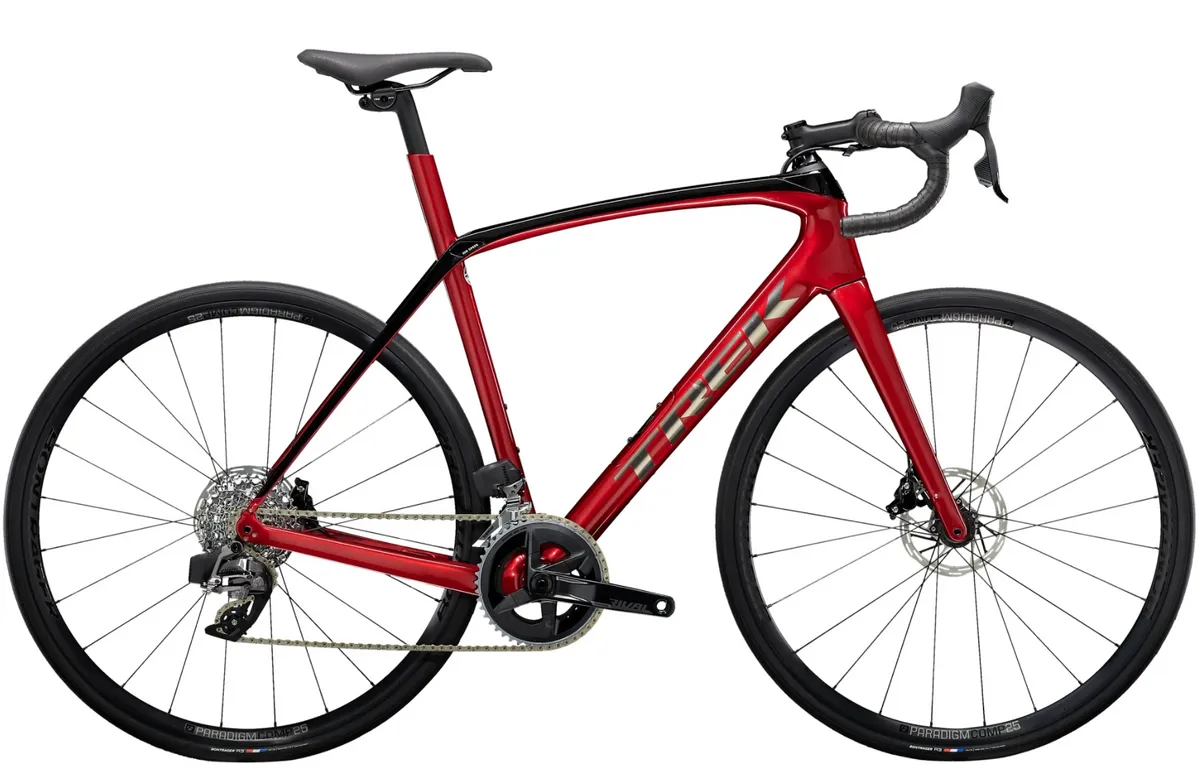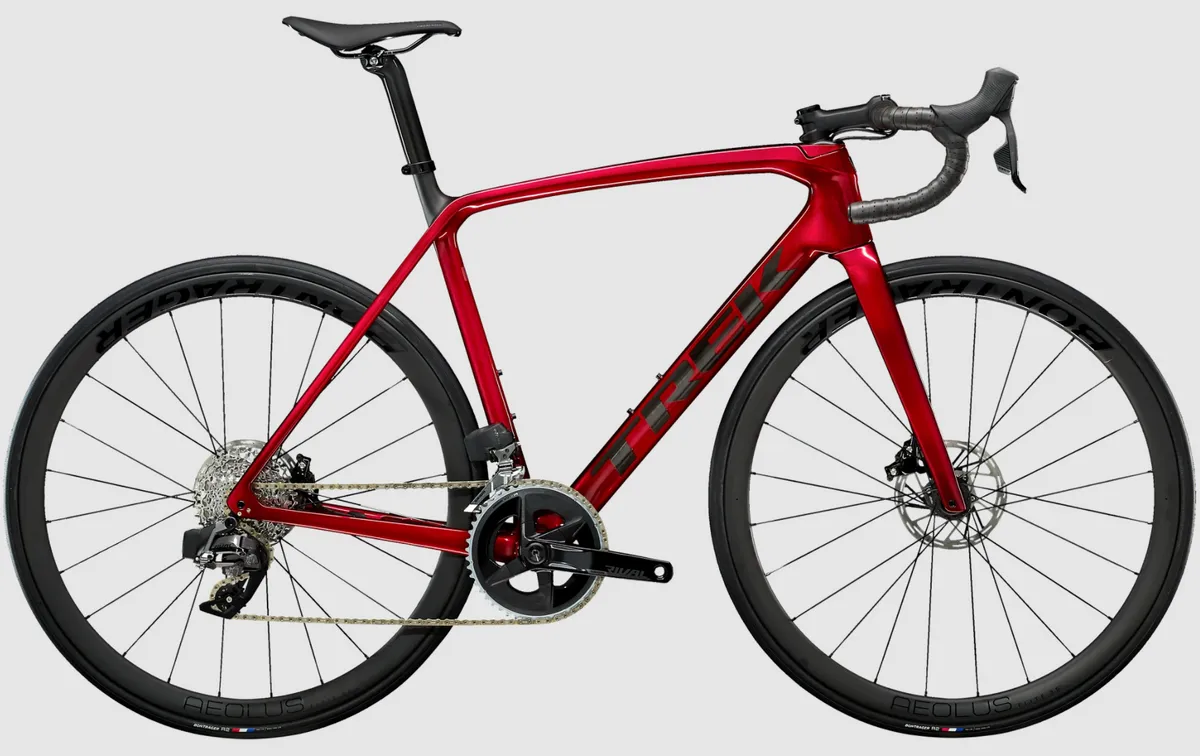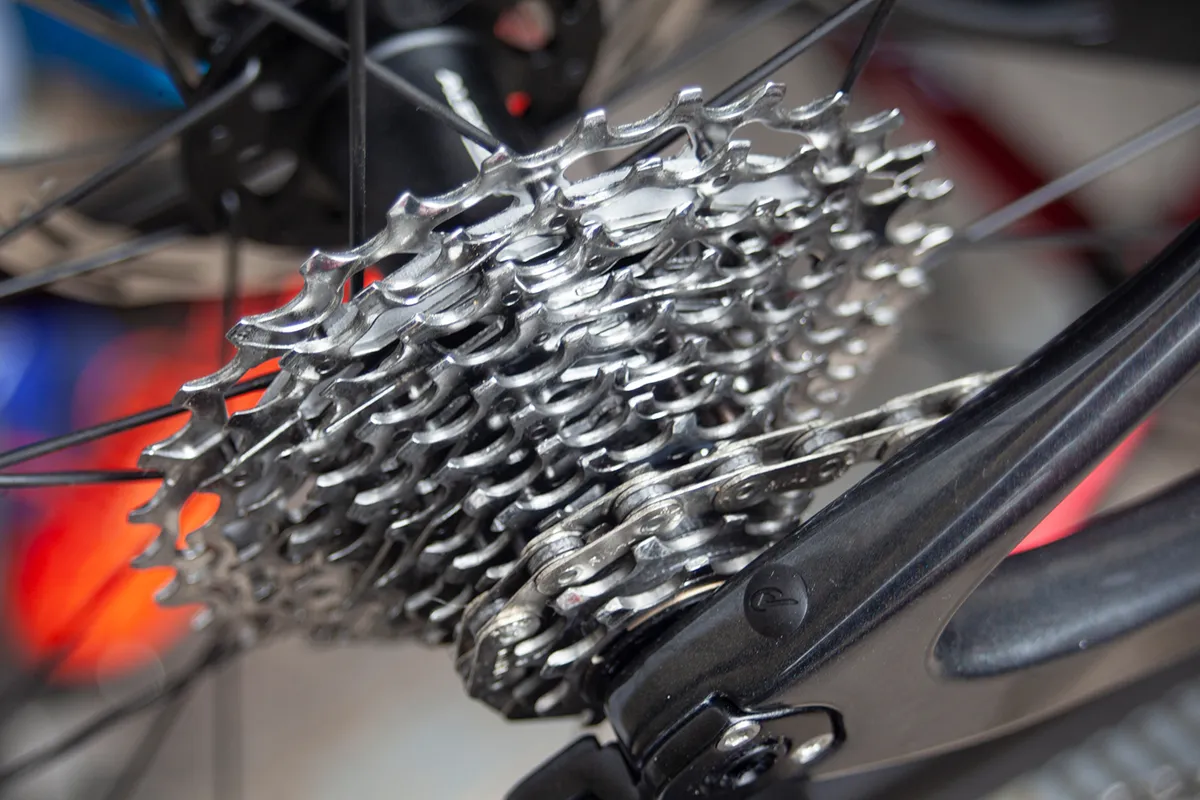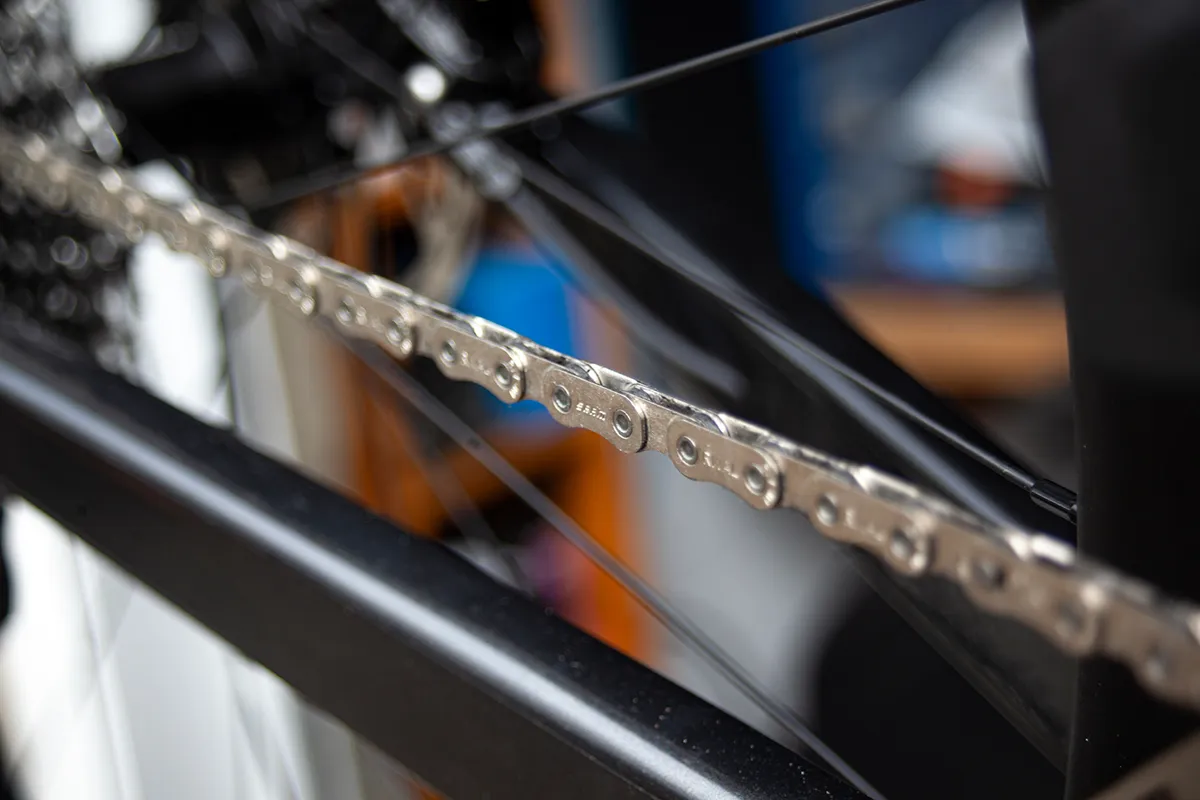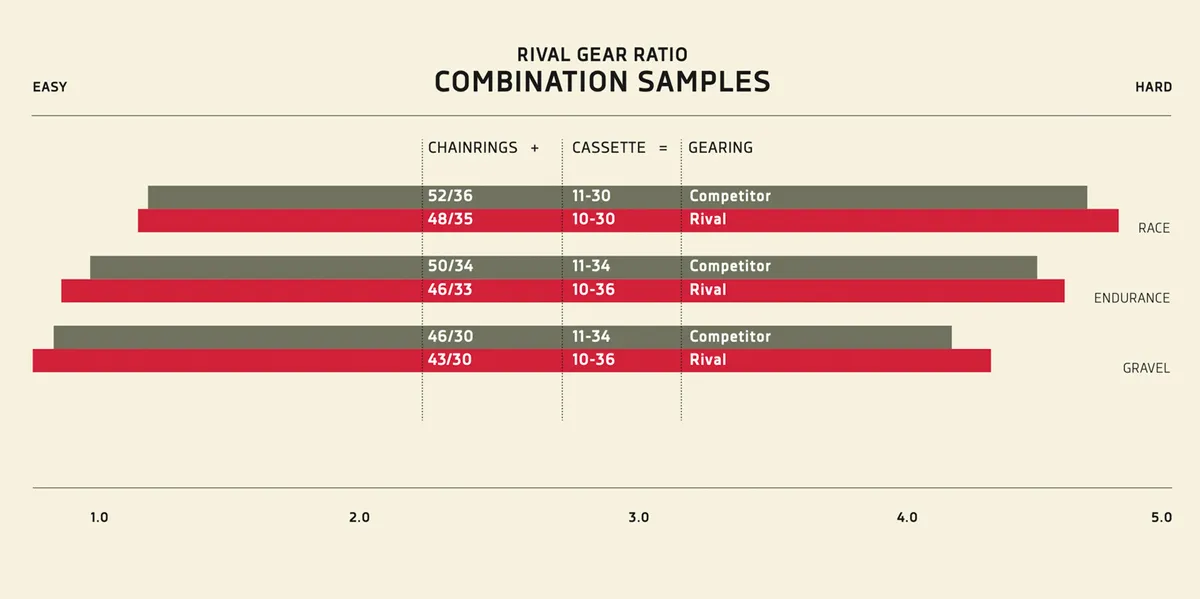SRAM has announced the Rival AXS 12-speed groupset, launched as a third-tier wireless drivetrain to complement the high-end setups offered by Force AXS and Red AXS.
The all-new Rival eTap AXS groupset promises the same ride experience as Force and Red, with the same eTap shift logic and all of the advantages a wireless system can bring.
The big story, however, is the price, with 2x groupsets retailing for £1,268 and a 1x version coming in at £1,056. There’s also a power meter upgrade option for the crankset, with power meter-equipped 2x groupsets priced at £1,470 and 1x setups at £1,258.
In this article, I'll cover all the important tech details about Rival AXS (including full prices for the UK, EU, US and AU, and claimed weights). For my first impressions out on the road, you can read my SRAM Rival AXS review.
What you need to know about SRAM Rival AXS
- It’s the cheapest wireless road groupset from SRAM
- Like Force and Red, Rival is also 12-speed
- Rival AXS uses the same eTap shift logic as other AXS groupsets (and you can customise the shifting controls with the AXS app)
- There’s a power meter upgrade option
- The groupset weighs ~300g more than Force AXS
- 1x and 2x options are available, including a ‘Wide’ option like Force and Red
- AXS compatibility means it can be mixed and matched with Force and Red, as well as SRAM’s AXS mountain bike components
What bike brands will use SRAM Rival AXS?

In the real world, most groupsets are bought as original equipment (OE) on complete bikes and, from what we understand at launch, bikes equipped with Rival AXS seem to sit firmly between those with mechanical Shimano Ultegra and electronic Shimano Ultegra Di2, in terms of price. For instance, the Boardman SLR 9.4 we’ve been testing the group on is priced at £2,700.
JP McCarthy, SRAM’s global product manager, tells us the OE uptake on Rival AXS has been unprecedented, with many of the major players in the road market offering Rival AXS machines across their whole line (road, aero-road, endurance and gravel).
Meanwhile, Danie Lategan, SRAM’s road tech expert for Europe, says Specialized, Trek, BMC, Ridley, Orbea and Boardman are among the brands offering Rival eTap AXS-equipped from launch in April.
Trek has shared details of its Rival AXS range with us. The brand will be offering the groupset on the mid-level Domane SL 6 and Emonda SL 6, both to be priced at £4,200, while there will also be Rival eTap AXS options for the top-tier Domane SLR, Emonda SLR and Madone SLR frames.
We also know of a few more brands launching Rival AXS bikes very soon, but our lips are sealed for now because these are new, as yet unreleased models.
What’s AXS and eTap?
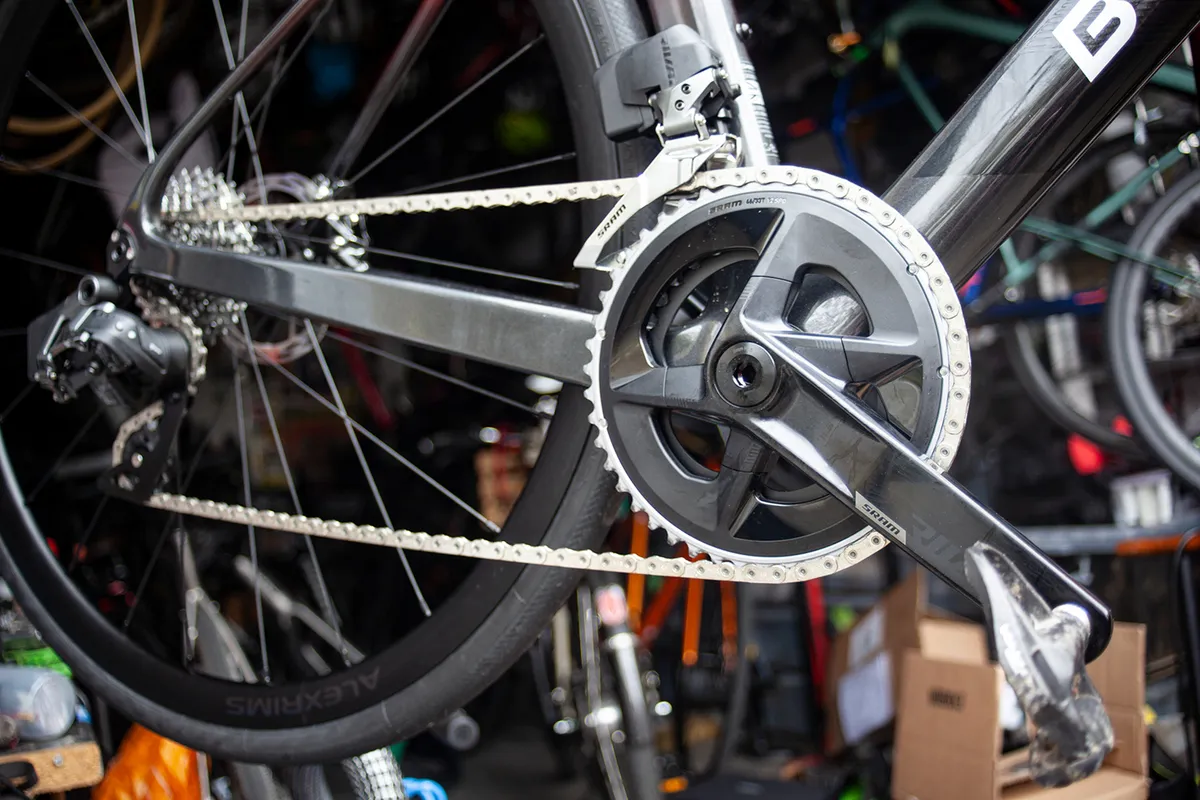
SRAM may have been late to the electronic drivetrain party, only launching the original Red eTap groupset back in 2015, six years after Shimano Di2 and four years after Campagnolo EPS, but the delay seems to have given the US brand a chance to move in a different direction to its rivals.
The original eTap wireless groupset was a bold move, not just because of the shift to electronics and the elimination of wires, but because SRAM also created its own encrypted communication protocol, Airea, at the same time.
Each time an eTap groupset is paired, a new encryption code is generated and assigned to the components, ensuring interference-free shifting, even in a peloton of many eTap-equipped bikes.
I’m still running the original Red eTap on a couple of my own bikes and, in many years and with more than 10,000 miles of riding under my belt, I’ve had zero issues with missed shifts or interference.
SRAM’s eTap shift logic has also impressed since day one, thanks to its simplicity. Quite simply, you click the right trigger behind the brake lever to make the gear harder, the left trigger to make it easier, and both together to shift the front mech (either up or down, based on its current position).
Compare that to both Di2 and EPS, where Shimano and Campagnolo use electronics to try and emulate the mechanical experience, and SRAM chose instead to wipe the slate clean. The period of adjustment when using SRAM’s system is shorter than you think and after the original eTap launch I quickly grew to appreciate the simplicity.
When the AXS update arrived in 2019, it didn’t so much replace eTap, but improve the smart credentials of the original system, with an app and customisable controls. It also added a 12th sprocket to the Red and Force systems, and that now continues with Rival eTap AXS.
Your move, Shimano…
From what we’ve seen of the bikes specced with SRAM Rival AXS at the groupset’s launch, we’re looking at models that sit below Shimano Ultegra Di2 in price, and only a little above mechanical Ultegra.
Since the launch of the original Ultegra Di2 back in 2011, and right up to the latest Ultegra R8070 Di2 back in summer 2017, Shimano has been adamant that Di2 technology won’t trickle further down to the road groupset hierarchy. That means no Shimano 105 Di2.
With Rival AXS’s arrival, however, Shimano may need to re-evaluate that business plan, as the draw of wireless electronic gearing for just a little more than mechanical Ultegra could have a serious effect on the near domination the company has at this price point.
That goes for gravel, too. Shimano’s brilliant GRX Di2 starts to look exposed when SRAM is offering Rival AXS with gravel-compliant Wide components, with both 1x and 2x options, and the opportunity for mullet builds if mixed with Eagle AXS mountain bike components.
We can also live in hope that Campagnolo’s engineers are considering their options beyond the ultra-expensive Super Record EPS – currently the only electronic groupset in the Italian firm’s range.
Perhaps we’ll see the return of Record and Chorus EPS, and maybe even Centaur, though admittedly that’s one hell of a long shot.
For now, though, eyes will be on what’s next from Shimano.
12-speed
The advent of 12-speed for SRAM didn’t just mean the addition of another sprocket – but a complete rethink on bike gearing, with a 10-tooth cog on the cassette and new chainring sizes to match.
Unlike traditional 11-speed systems, the largest chainrings in the AXS world became 50/37, as a match for the standard 53/39 double we’re used to seeing on pro race bikes.
This ‘big’ size is only available in the pro-level Red group and, according to SRAM, the take-up of this sizing has been minimal – hence it’s not available in either Force or the new Rival group, which are aimed at the enthusiast rider, rather than the pros.
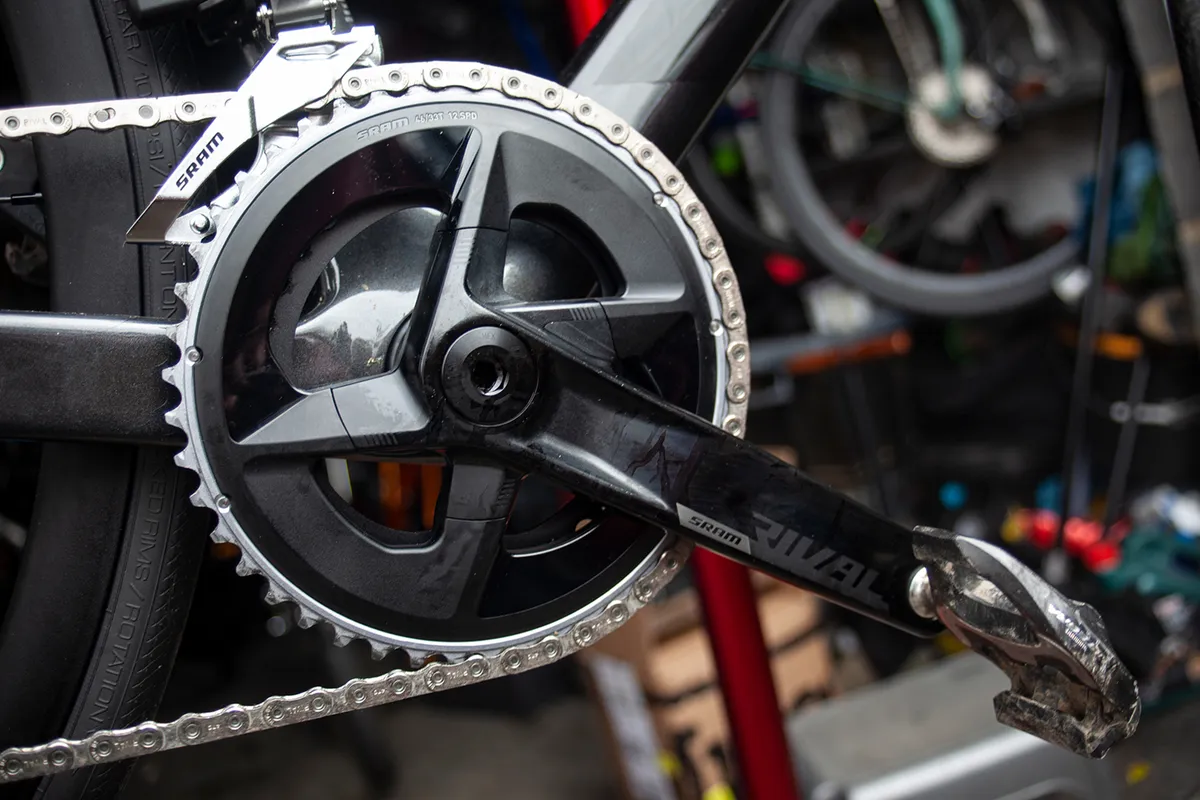
Instead, chainring sizing for Rival eTap AXS is set at 48/35t and 46/33t for a double crankset, and 43/30t in the Wide system, aimed at the gravel market. Single-chainring 1x options are 40t and 46t.
Cassette options vary between the AXS ranges too, but Rival comes with 10/30t or 10/36t.
The gearing range these options offer is impressive when compared to standard 11-speed systems. Another key benefit is the small jumps between the core gears, with one-tooth gaps from one sprocket to the next.
The 10-30t cassette offers a 300 per cent range, while the 10-36t cassette increases that to 360 per cent. Combine that with the revised chainring options and you have gearing that combines a closer set of gears through the core range, with a wider overall spread.
Cost-cutting
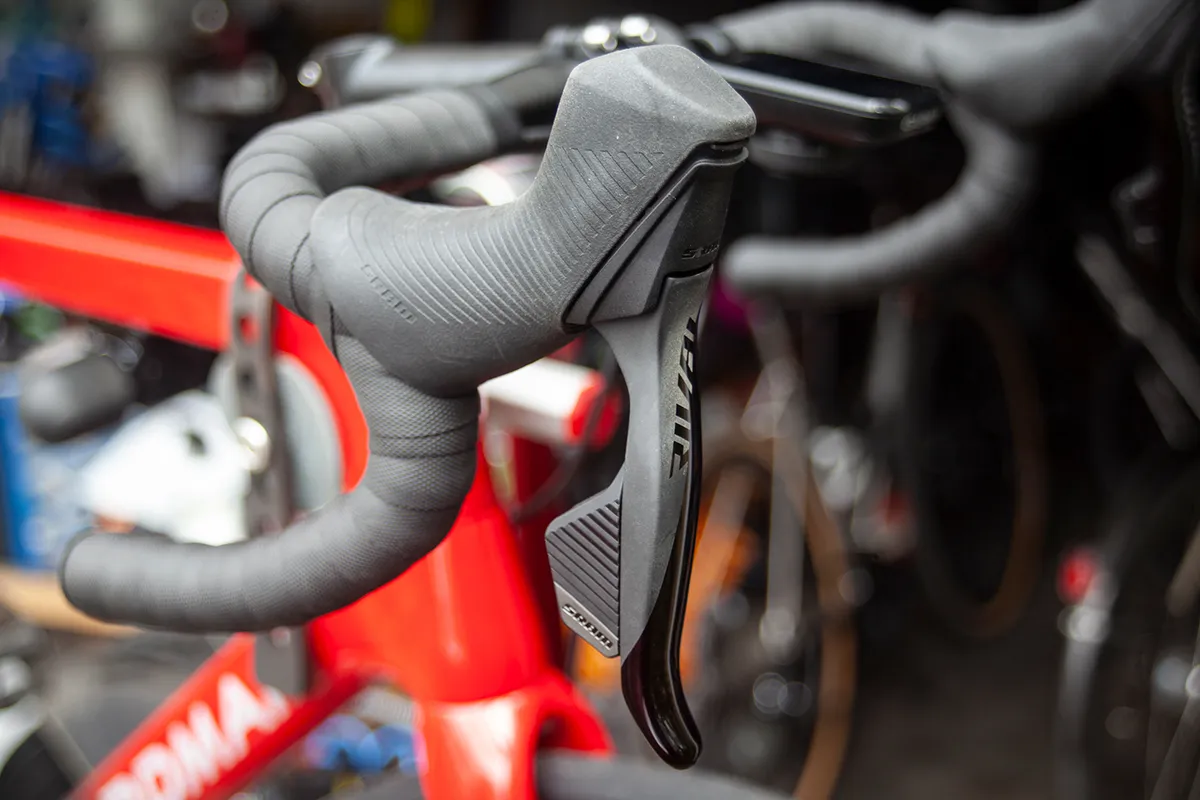
As we’ve covered so far, Rival AXS looks to emulate many of the features found on the existing eTap AXS groupsets: wireless shifting, SRAM’s tried-and-tested shift logic, and 12-speed gearing.
So how has SRAM reduced the price of the groupset?
The company decided not to compromise on overall electronic performance, so the core components – motors, chipset, antennas, etc – are exactly the same as the pricier groups.
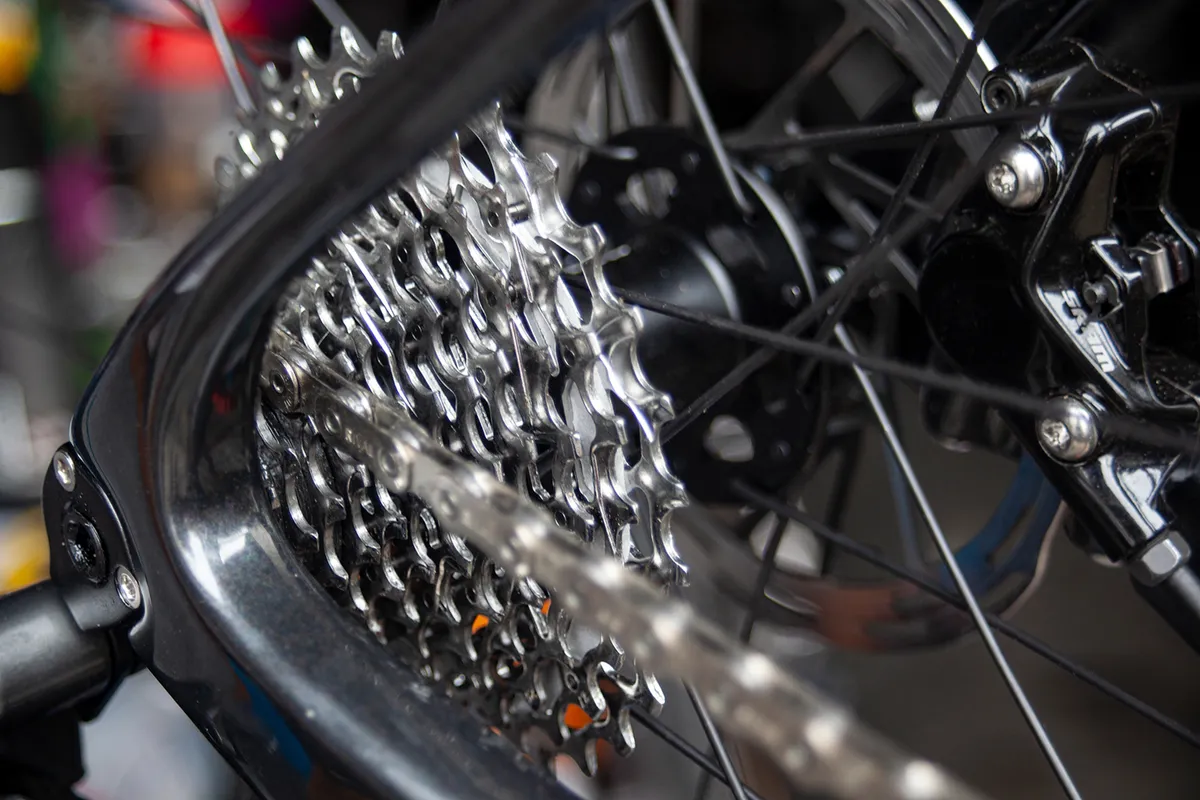
Cost savings still needed to be made, of course. As you can imagine, most of those savings come from material choice, so simple things like aluminium in place of carbon for the levers of the shifters.
The same goes for the remaining components – for example, the front mech cage plates are steel, rather than lightweight alloy.
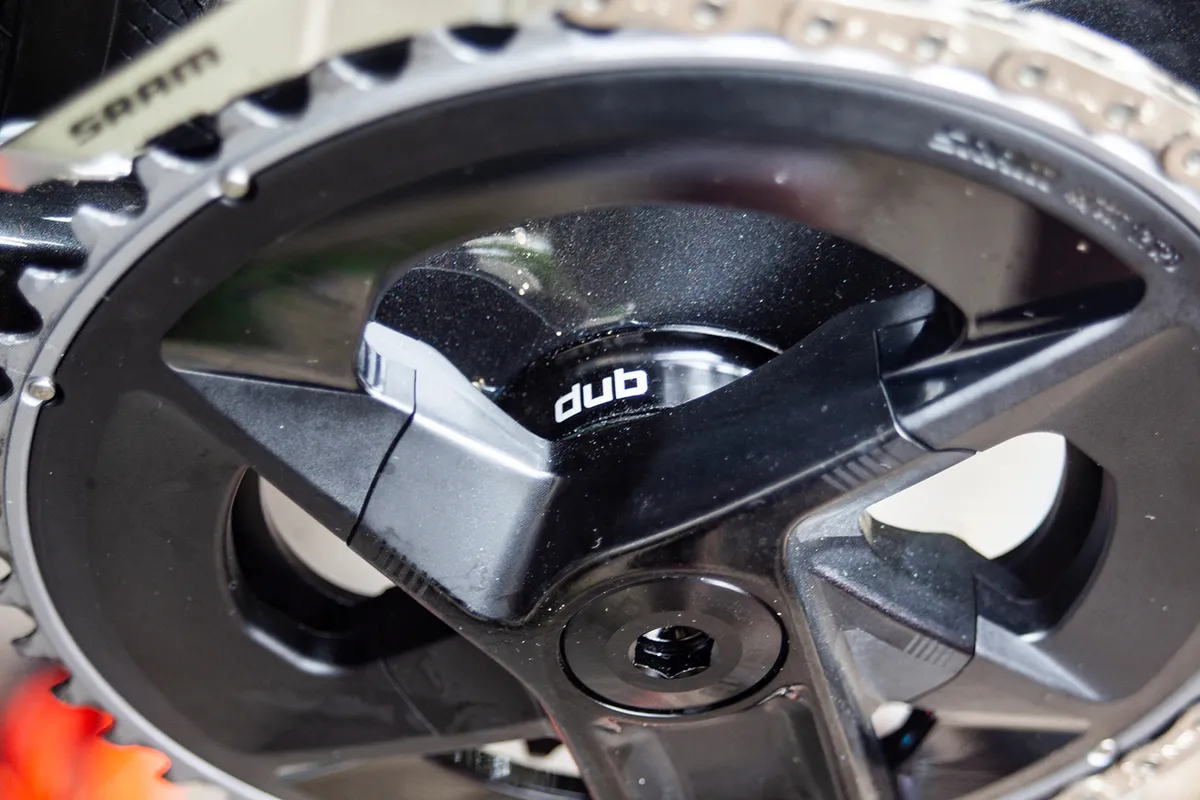
Elsewhere, the bodies of both the front and rear mech are predominantly a nylon-based material, whereas the premium models go with carbon.
At the back, the cassette is all-steel, rather than the mixed materials of the premium groups, and is made using SRAM’s standard construction (no fancy 3D/CNC wonders here). That said, in my opinion, the Rival cassette, with its high-polish chrome finish, looks somewhat more premium than the black-on-black anodised finish of Force.
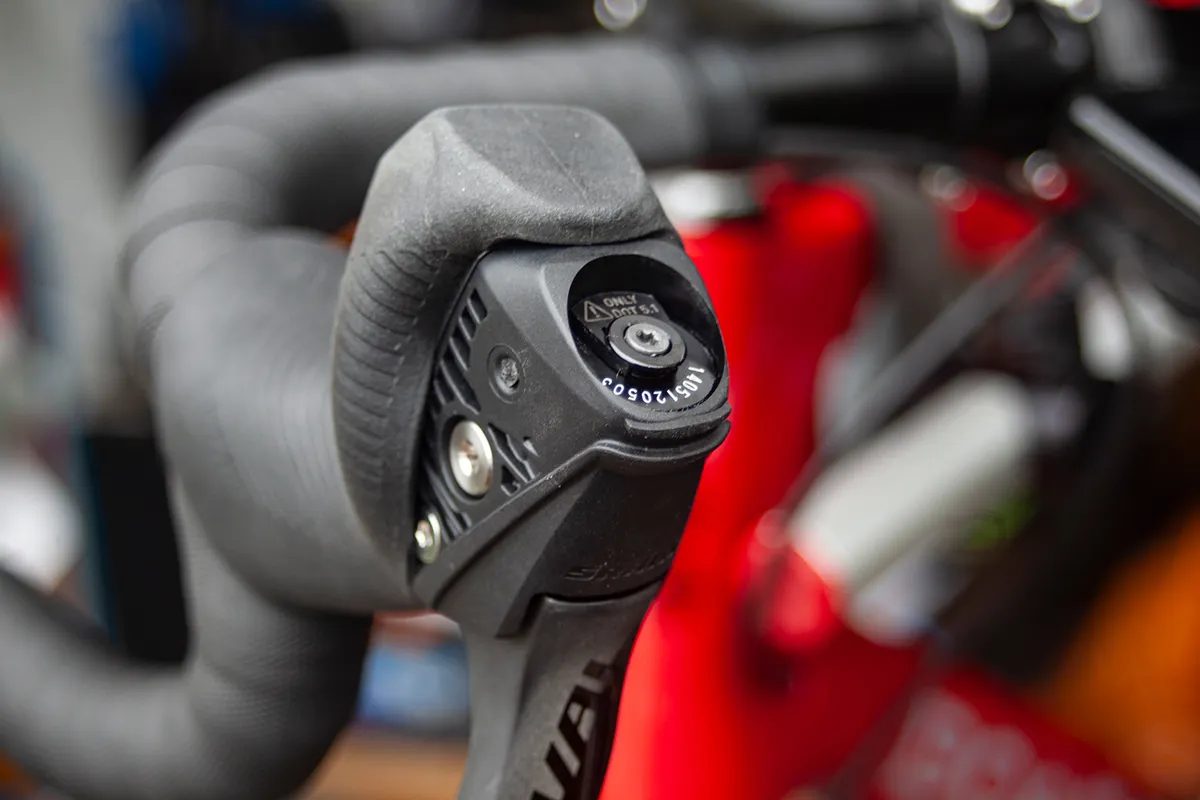
The brakes use the same two-piece caliper body introduced with Force (and updated on Red). Unlike Force and Red, the system uses standard bleed ports – not the quick and simple ‘bleeding edge’ ports of Force and Red.
That does, however, mean that you can use plenty of non-SRAM bleed kits, rather than the proprietary option.
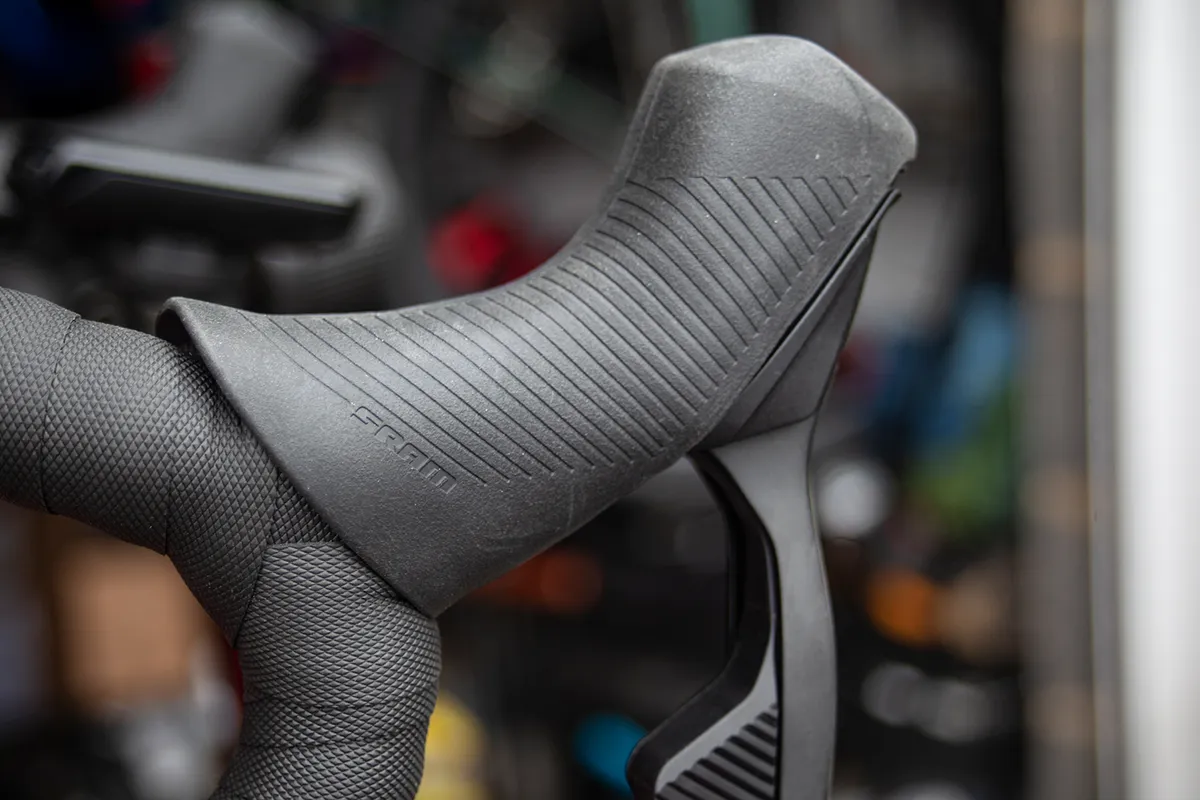
The major difference, aside from materials, is in the shifters themselves.
The Rival units forgo the two additional ports that both Force and Red carry to add additional satellite shifters. The hoods also remove the contact point adjustment for the brakes, though they do have reach adjustment.
If you’re completely wedded to the idea of secondary shifters (and I have to admit to being a fan; I have these on one of my Red eTap bikes and on a Di2 bike) that may be a bit of a kick in the guts. However, if you’re used to mechanical groups then you’ve probably never missed them.
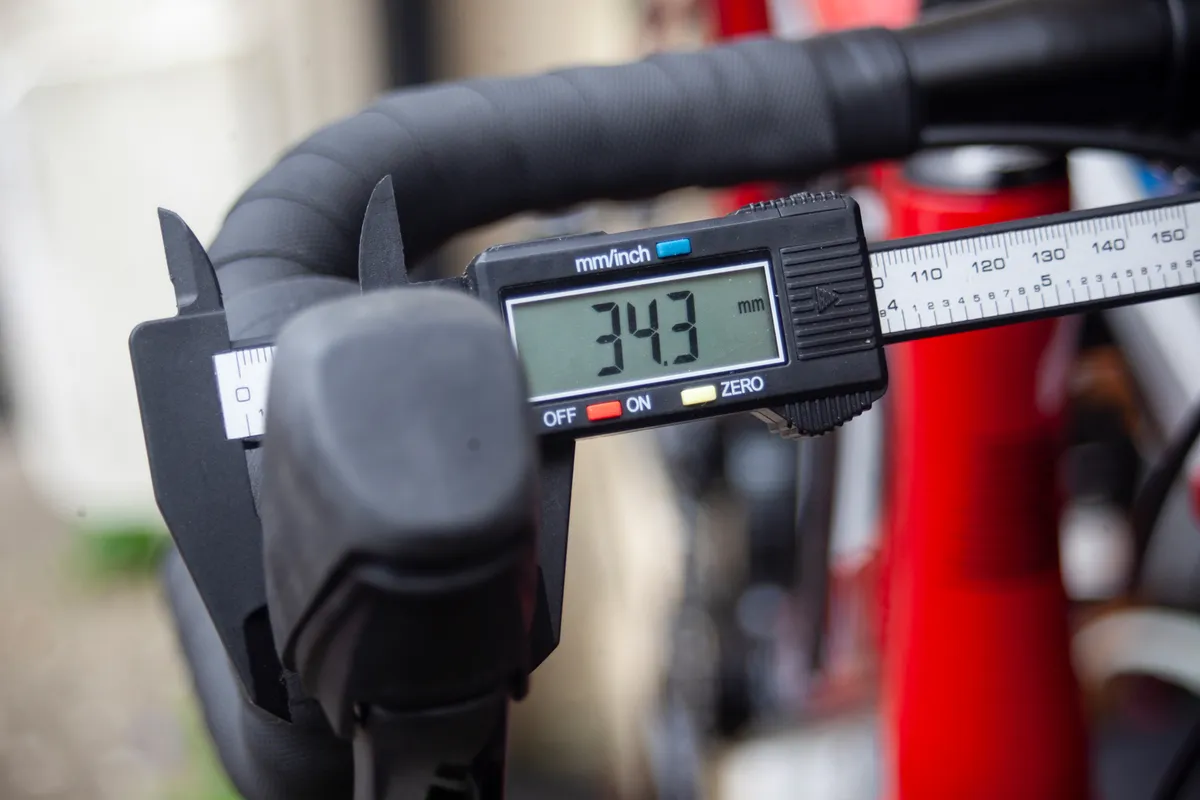
The reduction in features does have one benefit. By removing the extra ports and adjusters, the hood shape and breadth is reduced. From my own measurements, it drops from 71.4mm tall x 36.3mm wide (Force) to 67.5mm x 34.3mm (Rival).
The hood covering has also been reshaped and restyled, with a liner grip pattern that closely matches the gear shift trigger, rather than the cross-hatched textured grip of Force.
SRAM Rival eTap AXS component parts
That’s the headline features and changes covered. Now let’s take a closer look at the individual component parts of SRAM Rival eTap AXS.
SRAM Rival eTap AXS shifter/brake units
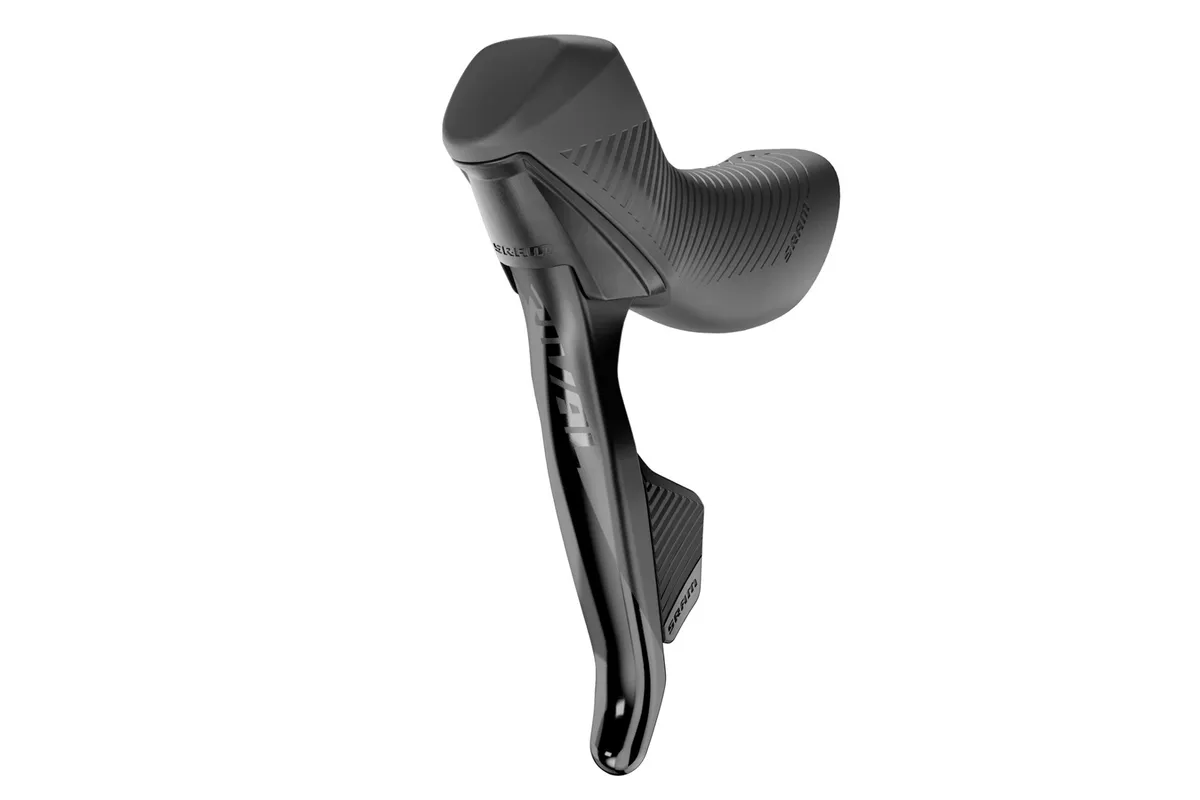
The new Rival shifters have a reduced hood volume and smaller overall size. Combined with the lever's reach adjustment, these should better fit a wider range of hands than their more expensive cousins, especially when it comes to riders with smaller hands.
The shift triggers have a new textured pattern that repeats on the hood rubber, making the Rival shifter arguably look cleaner and smoother than the pricier Force option.
SRAM Rival eTap AXS disc brake calipers
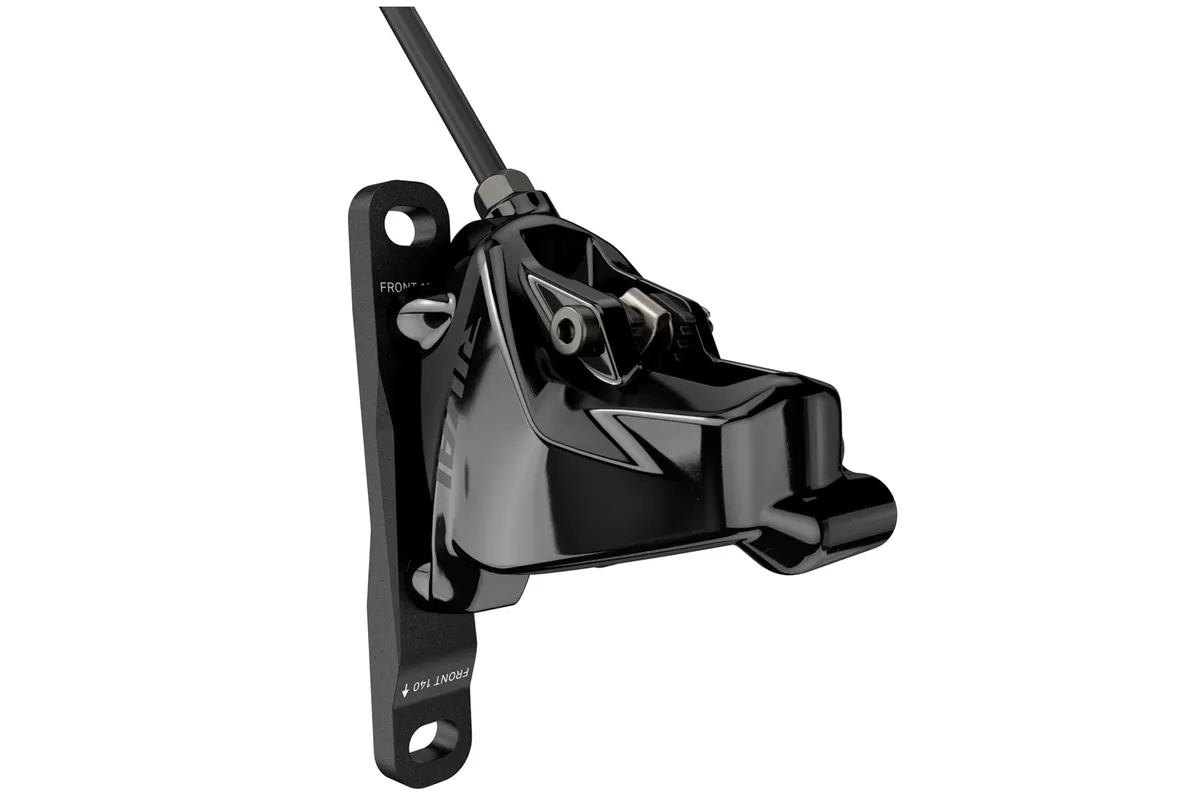
The disc brake calipers share the same two-piece construction as Force but omit the ‘bleeding edge’ port tech in favour of simpler, standard bleed ports.
SRAM Rival eTap AXS crankset
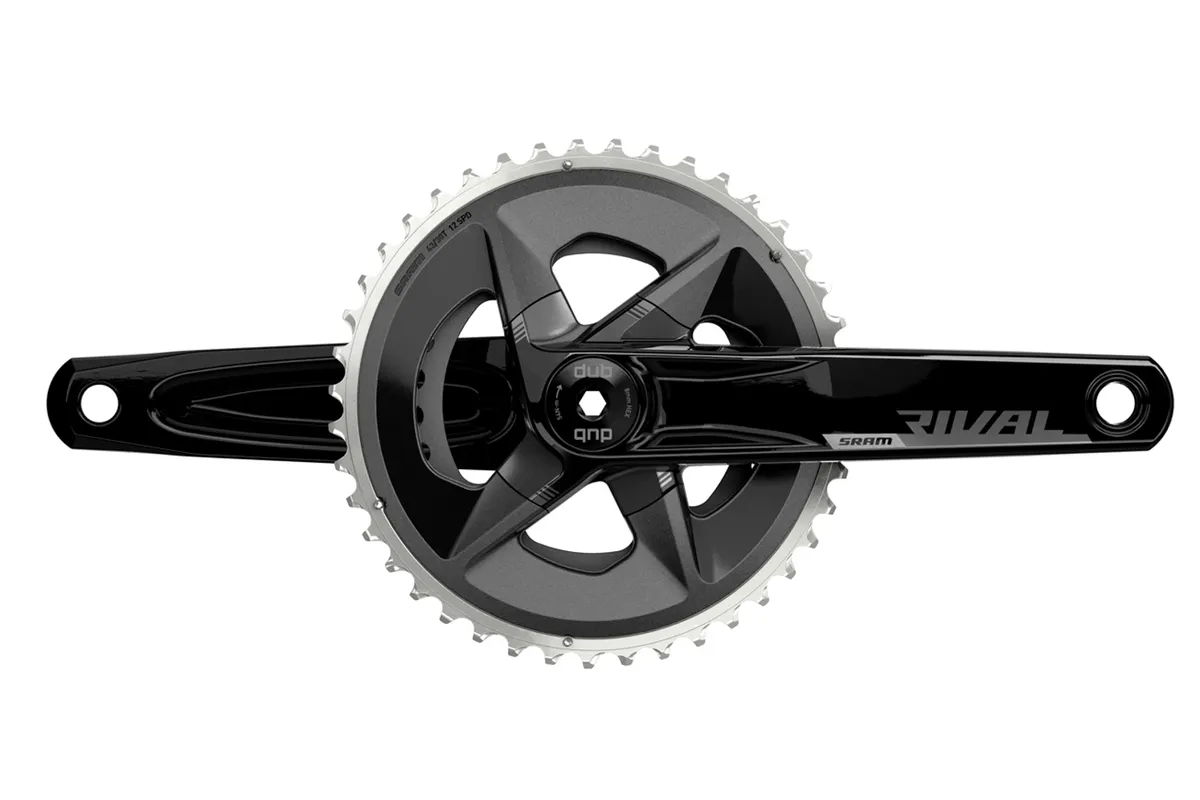
The Rival crankset is a full alloy construction and designed around SRAM’s DUB bottom bracket standard.
A Wide version of the crank is also available, spacing the axle slightly wider than standard (5mm), to accommodate the need for bigger tyre clearance on gravel bikes and modern all-road bikes, while maintaining the optimum chainline.
SRAM Rival eTap AXS front derailleur
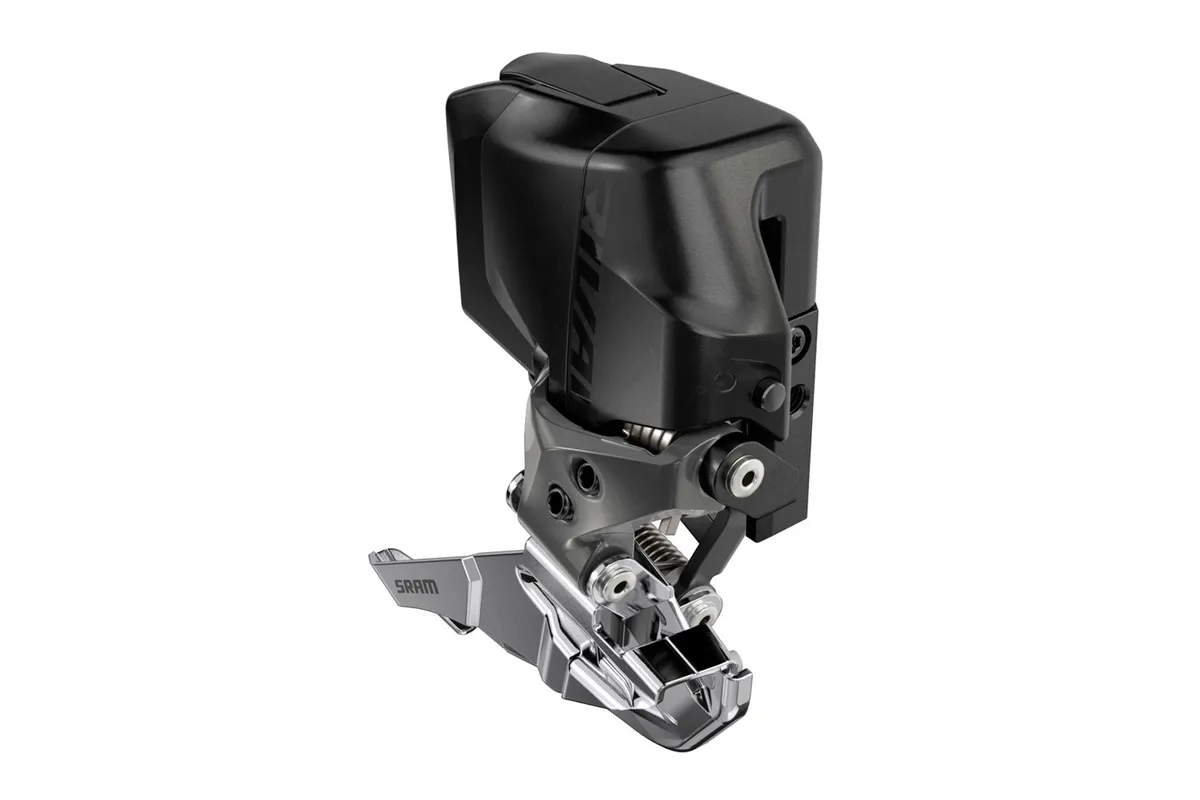
Essentially the same as the pricier groups but with steel cage plates rather than lighter alloy. Like the chainset, there’s also a ‘Wide’ version available.
SRAM Rival eTap AXS rear derailleur
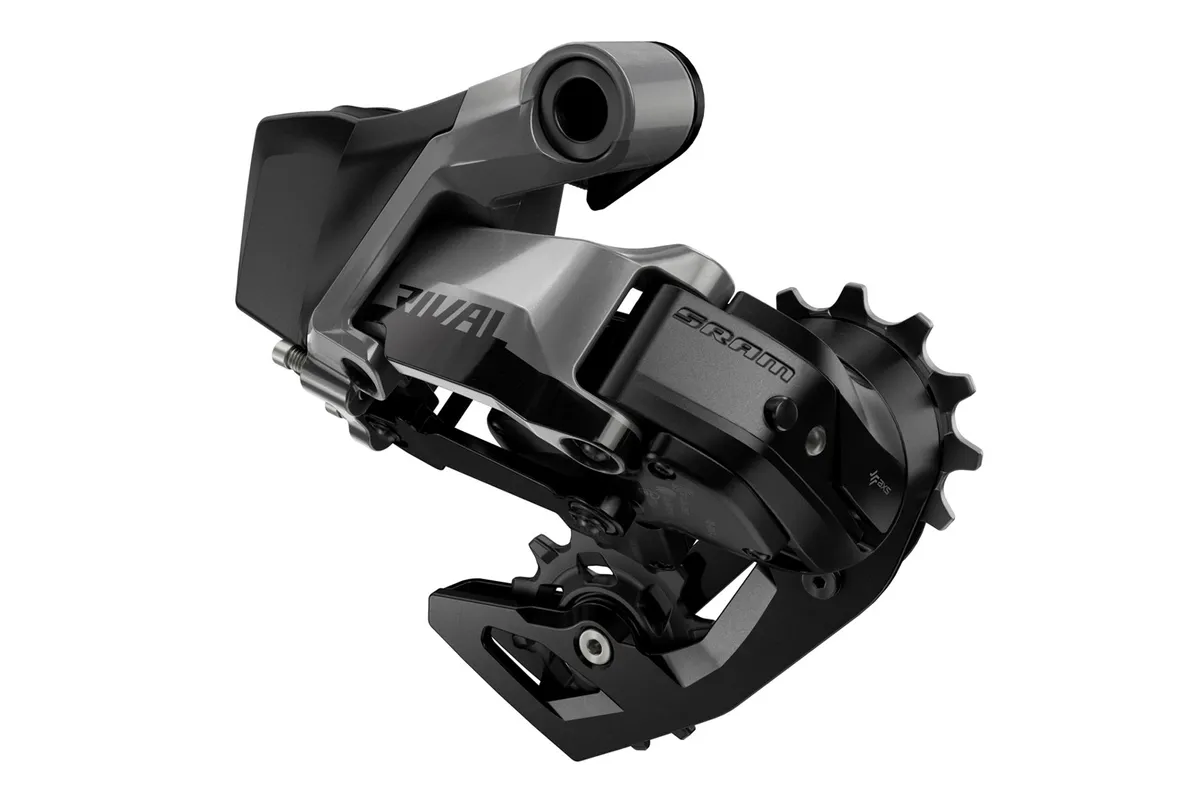
There’s a significant difference here. Whereas Force and Red use the clever Orbit fluid damper system to manage chain bounce and chatter, Rival goes for a simpler (and cheaper) spring-loaded clutch, borrowed from SRAM’s mountain bike line-up (and the ever-popular Force 1 groupset).
The Rival mech has a 36t max capacity, making it applicable for both 1x and 2x systems.
SRAM Rival eTap AXS cassette
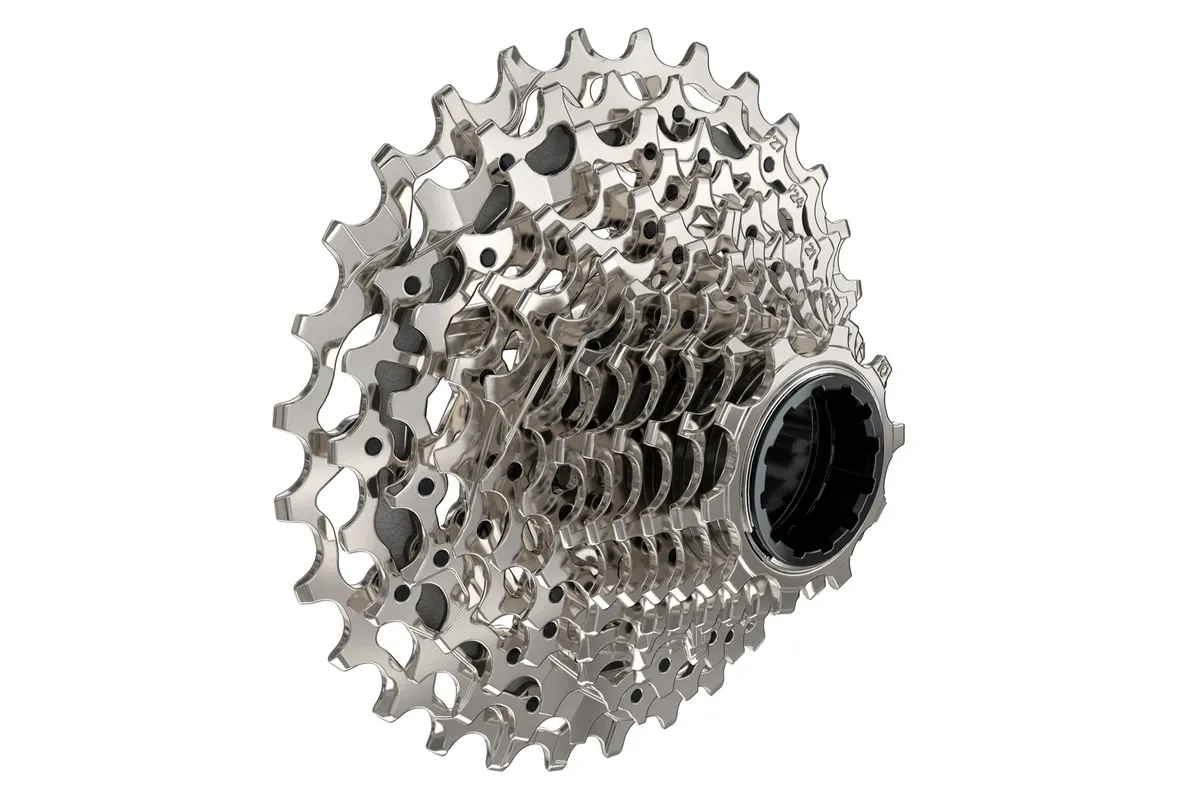
This new X-range cassette comes in a road-friendly 10-30t spread and a more all-road specific 10-36t.
The cassette is built using SRAM’s ‘pin dome’ tech and is specific to XDR freehubs. It's built from steel and comes with a fancy-looking, high-polish nickel chrome plate finish.
SRAM Rival eTap AXS chain
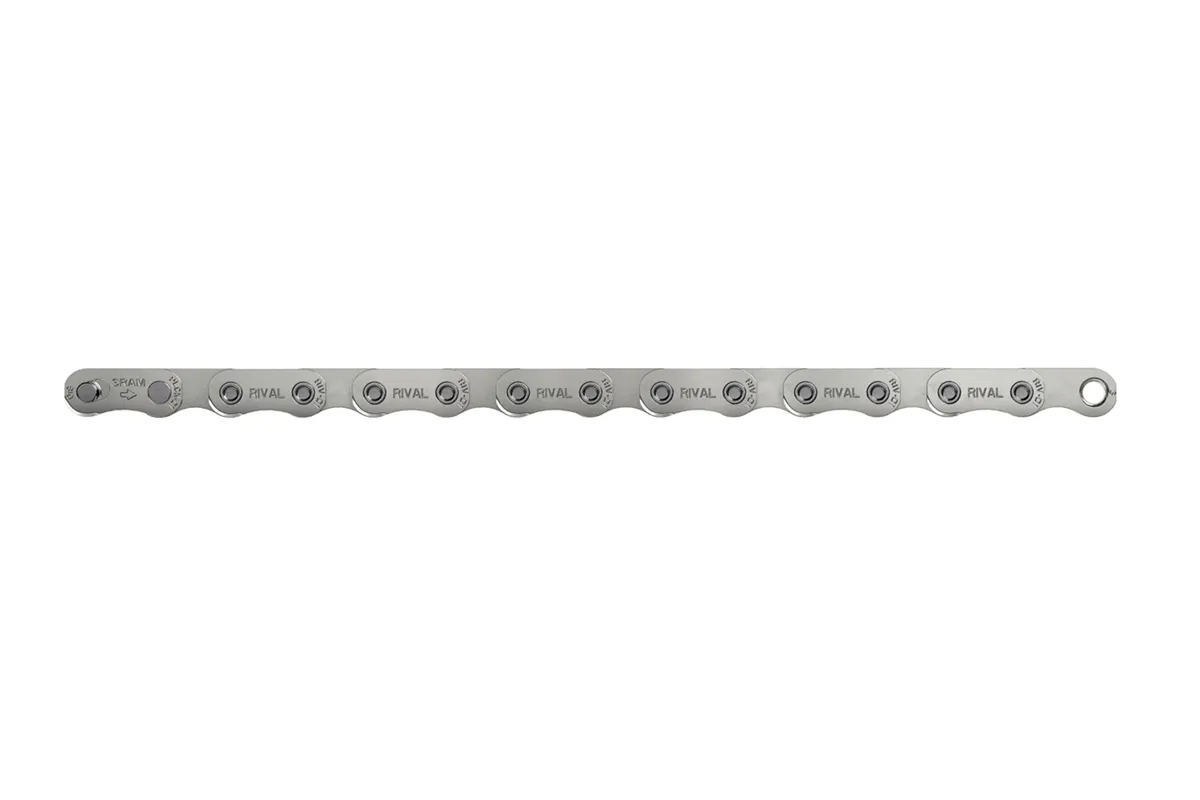
The distinctive ‘flat-top’ design of SRAM’s 12-speed road chains remains and it’s one chain for both the 1x and 2x systems.
Like the cassette, this comes with a high-polished finish, which belies its mid-range price point.
Wait, there’s a power meter?
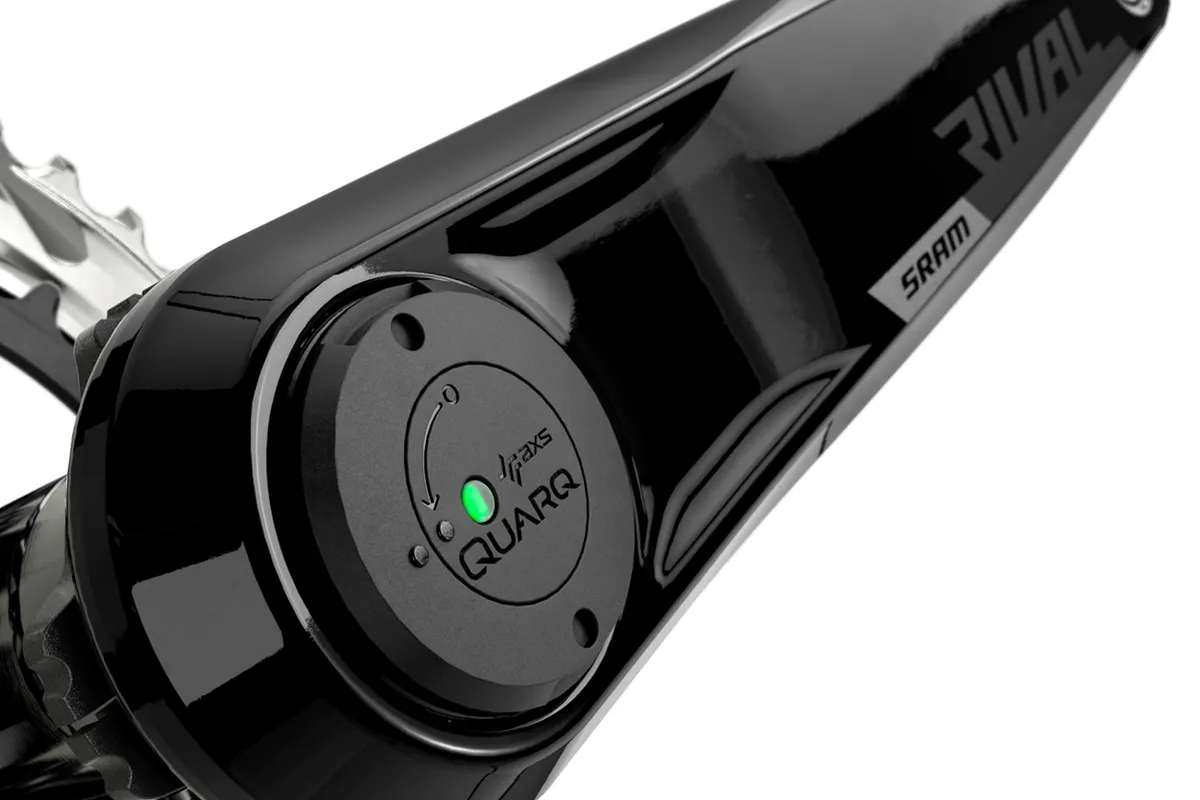
SRAM’s positioning of Rival as a premium offering at a more affordable price extends to including a power meter option as part of the group.
How much uptake we’ll see for the power option as original equipment on bikes specced by brands remains to be seen, but it’s a very keenly priced option. It’s available as a complete chainset (£322 / $349 / €360) or as an upgrade kit (£260 / £230 / $249).
The power meter itself consists of the left-hand crank arm with an integrated spindle (which contains the strain gauges). This measures power on the left side only, which is then used to estimate the rider’s total watts.
While SRAM admits the much more expensive, dual-sided Quarq chainsets offer better overall accuracy, the company is keen to state that the Rival option offers reliable and consistent measures.
The power meter is rated to IPX7 waterproofing, which means it passes a test of being submerged at a depth of one metre for 30 minutes and still operates without issue.
Simplicity seems to be the key with the Rival unit, which adds minimal weight to the chainset (just shy of 40g) and will run for a claimed 400+ hours from a single, easily replaceable AAA battery.
SRAM says lithium rather than alkaline batteries should be used due to the more consistent performance and the fact rechargeable lithium batteries are available too.
AXS compatibility
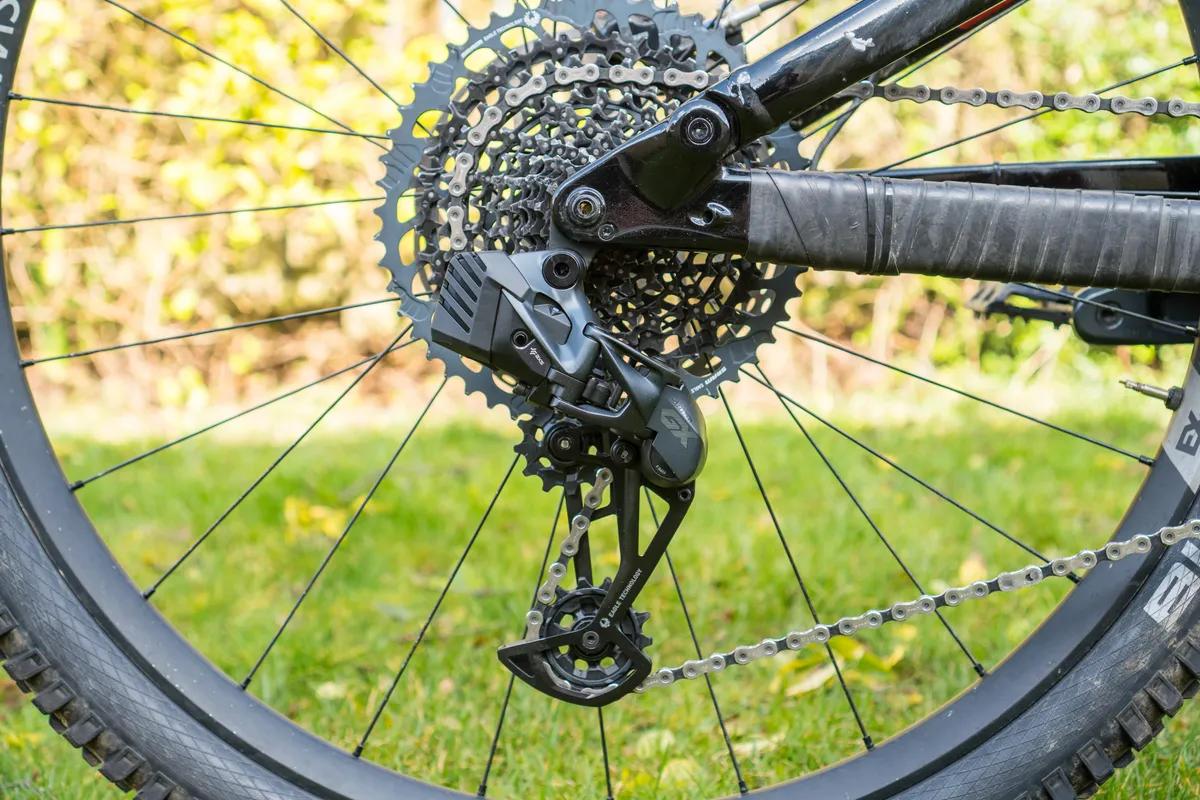
Rival is fully compatible with the rest of the AXS stable, so you can mix and match Force, Red and Rival. The road market has always been a little more conservative than mountain biking here, where groupset mixing has been part and parcel of bike builds.
Despite that, I like the idea of a custom build that mixes components from different levels, opting for a Rival cassette rather than Red (which is more than twice the price) or using a Rival chain over Force, and putting the money saved into a power meter or upgrading the shifters to allow for satellite shifting.
Putting together a ‘mullet’ drivetrain with both road and mountain bike AXS components is also possible – and positively encouraged by SRAM. That means you could build a 1x bike with mainly road components and an ultra-wide mountain bike rear mech and cassette.
On the mountain bike side, it’s also worth pointing out that SRAM recently launched the GX Eagle AXS groupset, pitched at the same level as Rival AXS, so you’ve got more affordable options there, too.
SRAM Rival AXS weights and prices
Prices for SRAM Rival AXS components are below but SRAM has also provided full groupset prices
The 2x group retails at £1,268 or £1,470 with the power meter, while the 1x groupset is £1,056 or £1,258 with power meter.
That said, complete groupset prices should always be taken with a pinch of salt, given how rare it is for a groupset to retail at full RRP. The big take-up of Rival AXS is likely to be on complete bikes for 2021 and 2022.
| Component | Weight | Price |
|---|---|---|
| SRAM Rival AXS shifters | 845g (pair) | £185 / $200 / €205 / AU$301 (each) |
| SRAM Rival AXS chainset | 844g (46/33t), 822g (43/30t Wide), 703g (40t, 1x) | £120 / $130 / €135 / AU$196 |
| SRAM Rival AXS chainset with power meter | 893g (46/33t), 871g (43/30t Wide), 745g (40t, 1x) | £322 / $349 / €360 / $AU526 |
| SRAM Rival AXS front mech | 180g, 182g (Wide) | £162 / $175 / €180 / AU$264 |
| SRAM Rival AXS rear mech (max 36t) | 366g | £236 / $255 / €265 / AU$384 |
| SRAM Rival AXS cassette | 282g (10-33t), 338g (10-36t) | £112 / $125 / €125 / AU$188 |
| SRAM Rival AXS chain | 266g (120 links) | £28 / $30 / €31 / $AU45 |
| Paceline rotors (centrelock) | 141g (140mm), 163g (160mm) | £100 / $100 / €110 / AU$150 |
| Complete groupset (2x) | 3,202g | £1,268 / $1,370 / €1,411 / AU$2,054 |
| Complete groupset (1x) | 2,850g | £1,056 / $1,140 / €1,176 / AU$1,710 |
| Complete groupset (2x, with power meter) | 3,256g | £1,470 / $1,589 / €1,636 / AU$2,384 |
| Complete groupset (1x, with power meter) | 2,892g | £1,258 / $1,359 / €1,401 / AU$2,040) |
